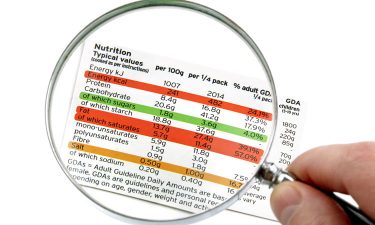Call for change in food labelling guidelines to help fight obesity
- Like
- Digg
- Del
- Tumblr
- VKontakte
- Buffer
- Love This
- Odnoklassniki
- Meneame
- Blogger
- Amazon
- Yahoo Mail
- Gmail
- AOL
- Newsvine
- HackerNews
- Evernote
- MySpace
- Mail.ru
- Viadeo
- Line
- Comments
- Yummly
- SMS
- Viber
- Telegram
- Subscribe
- Skype
- Facebook Messenger
- Kakao
- LiveJournal
- Yammer
- Edgar
- Fintel
- Mix
- Instapaper
- Copy Link
Posted: 14 August 2019 | Rachael Harper (New Food Magazine) | No comments yet
Researchers are calling for government guidelines on food labelling to be amended after finding many misinterpret the information.


Researchers from the University of Essex found a huge discrepancy between the way information on food labels is interpreted and its intended meaning.
This is the result of a new study to investigate people’s understanding of verbal descriptors such as ‘high fibre’ and ‘low fat’, which are meant to help consumers make healthy eating choices. It found that typically people overestimate verbal descriptors like ‘high fibre’ and this could lead them to think they have had enough vitamins, minerals or fibre, when in fact their diet doesn’t meet dietary targets.
“The ability to judge the healthiness of food empowers people to fight obesity and diet-related disease,” said Dawn Liu, who led the study. “But our findings suggest there is a lot of confusion over food labels. Using terms such as ‘low’, ‘medium’ and ‘high’ may be simpler for consumers to understand, but these terms can also mislead them.
“This matters because overconsumption of negative nutrients and under-consumption of positive ones impacts health and we know most people in the UK don’t eat enough fibre.”


A recent study has found that consumers can be confused when reading food labels which is resulting in them eating unhealthily.
The study also identified the confusion caused when manufacturers use both verbal and numerical information on the same label – a breakfast cereal that is ‘high in fibre’, while providing 30 percent of your Guideline Daily Amount (GDA) of sugar, might seem to have a lot more fibre than sugar, when in fact both nutrients contribute equally to their respective GDAs.
It was also discovered through the study that consumers find it difficult to choose between two products if the nutritional information is presented verbally on one and numerically on the other – is a ‘low-fat’ cereal better for you than one which provides 12 percent of GDA for fat?
“It would be beneficial if the government’s guidelines for manufacturers were amended to be more in line with consumers expectations,” added Liu.
This paper will be published in the December issue of Food Quality and Preference and is available now online.
Related topics
Health & Nutrition, Ingredients, Packaging & Labelling, Regulation & Legislation, The consumer








